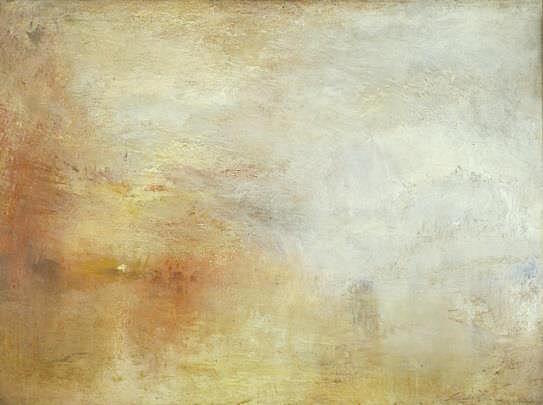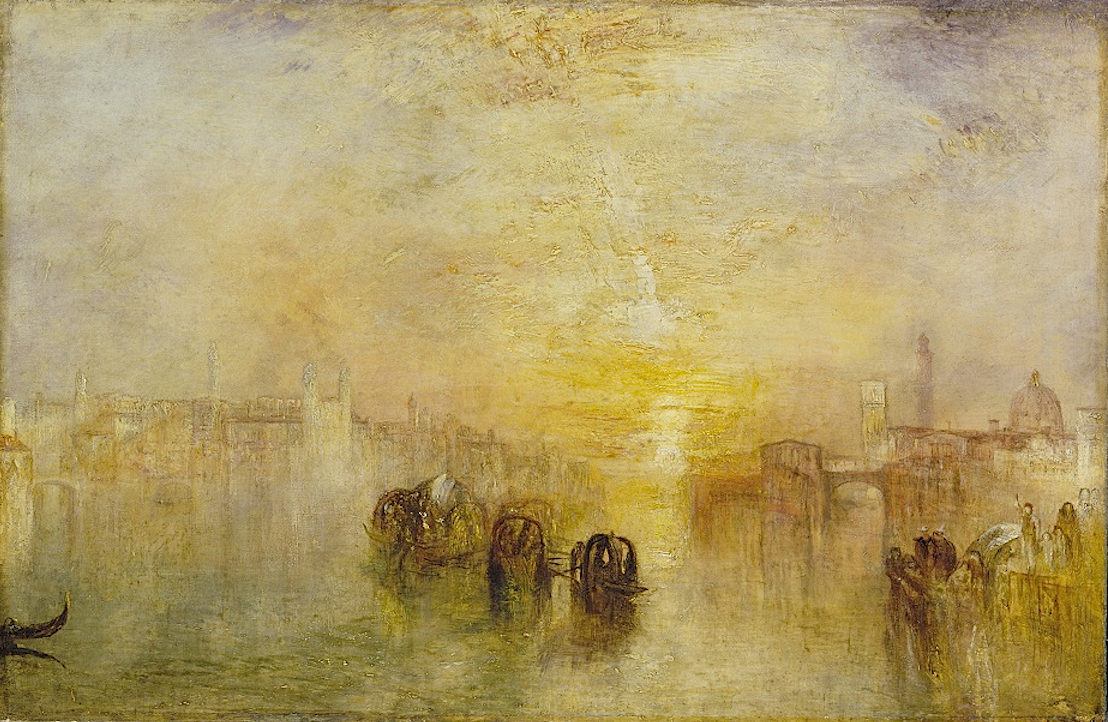The sun appears in many different guises in Turner’s work. Sometimes it is something very natural and elemental, at others, it is more mysterious and mystical. Turner was working in an era when the sun – what it was, what it was made of and the source of its power – was still a source of mystery and wonder.
‘Tis twilight dim no crimson blush of morn’ and ‘as wild Thyme sweet on sunny bank, that morn’s first ray delighted drank.’
In the weeks prior to his death, J.M.W. Turner is said to have declared (to John Ruskin) ‘The Sun is God’ – what he meant by this, no-one really knows, but what is not in any doubt is the central role that the sun played in Turner’s lifelong obsession with light and how to paint it.
Now an exhibition curated by Hampshire Cultural Trust will be the first ever to be devoted solely to the artist’s lifelong obsession with the sun. Whether it is the soft light of dawn, the uncompromising brilliance of midday or the technicolor vibrancy of sunset, his light-drenched landscapes bear testimony to the central role that the sun assumed in Turner’s art.
Through twelve generous loans from Tate Britain – the majority of which are rarely on public display – this focused exhibition Turner and the Sun will consider how the artist repeatedly explored the transformative effects of sunlight and sought to capture its vivid hues in paint.

Turner attended lectures and was acquainted with scientists such as Faraday and Somerville. It is, therefore, possible that he was influenced by the new scientific theories about the sun when he tried to depict it. Certainly, Turner’s own Eclipse Sketchbook of 1804 – which will be featured in the exhibition – shows him recording visual data of an atmospheric effect on the spot.
Turner also mined ancient mythology for inspiration. The tale of Regulus, the Roman general punished by having his eyelids cut off and thus made to stare at the sun, is echoed by the artist replicating the effect of solar glare in paint, while the stories of Apollo and the Python and Chryses both feature the Greek sun god, Apollo.
Given his place in the vanguard of Romanticism, Turner was also interested in poetry and wrote his own pastoral verse. He would often acclaim the life-giving energy of the sun and bemoan its absence during Winter: ‘The long-lost Sun below the horizon drawn, ‘Tis twilight dim no crimson blush of morn’ and ‘as Wild Thyme sweet on a sunny bank, that morn’s first ray delighted drank.’
Some of Turner’s most acutely observed images of the sun are his informal, private exercises in watercolour and experiments with wash and colour. Swiftly executed, sometimes in batches, they capture transient effects where the sky is utterly dominated by the effects of the sun.
One of the reasons he is such an exciting and inspirational painter is because he has an experimental approach to technique. In order to try and replicate the effects of the sun in paint, he uses a whole range of visual tricks and devices. For example, we often see him juxtaposing the lightest area of a composition with something very dark to heighten the contrast. He uses arcs, orbs, radiating circles of colour, broken brushstrokes, textured oil paint, seamless watercolour wash – sometimes he depicts sunlight as something very solid and physical, at other times it is a dazzling glare that we can’t properly see. Turner doesn’t just try to paint the sun. He seems to want to actually try and replicate its energy and light so that it shines out of his pictures.
Janet Owen, Chief Executive of Hampshire Cultural Trust, says: “By combining naturalistic observation with imaginative flights of fancy, Turner’s light-drenched landscapes encapsulate the elemental force of his art and remain as dazzling today as they were for a contemporary audience.
Turner and the Sun 5 August – 15 October 2017, The Gallery, Winchester Discovery Centre 21 October – 16 December 2017, Sainsbury Gallery, Willis Museum, Basingstoke

